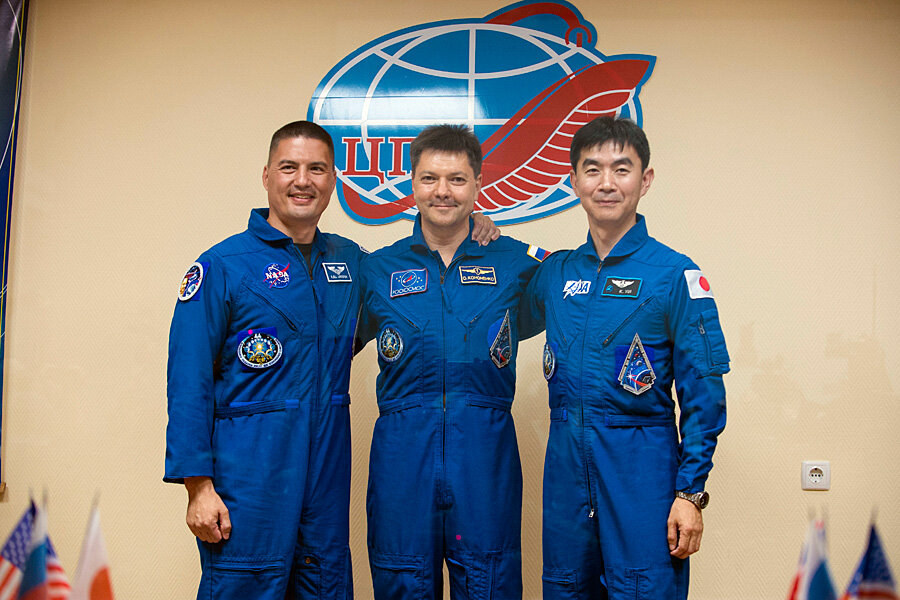Who are the 3 newest astronauts in space?
Loading...
3... 2...1... And we have liftoff!
Three new astronauts are now aboard the International Space Station (ISS), a mere six hours after taking off from Kazakhstan aboard a Russian Soyuz space capsule. The new crew will be in space until late December 2015, and will “support several hundred experiments in biology, biotechnology, physical science, and Earth science,” according to a NASA blog about the mission.
“Weird to be leaving in a long trip and leave all our luggage behind,” tweeted Astronaut Kjell Lindgren a couple hours before takeoff. Wednesday’s launch was supposed to have left Earth two months ago, but was postponed after Progress 59, an unmanned Russian cargo spaceship designed to resupply the ISS, spun out of control, becoming a $50.5 million piece of space junk in April.
Kjell Lindgren of NASA, Oleg Kononenko of the Russian Federal Space Agency (Roscosmos), and Kimiya Yui of the Japan Aerospace Exploration Agency (JAXA) are the three new crew members joining the ISS. This is the first time aboard the space station for Mr. Lindgren and Mr. Yiu, and the third time for Mr. Kononenko, noted the NASA blog about their mission.
International cooperation on space exploration has increased dramatically since the mid-20th century when Cold War frigidity marked the relations between the two space powers at the time, the United States and the Soviet Union. The first rocket launched into space was Bumper 2, shot off Cape Canaveral, Fla. in 1950 by the United States. Seven years later the USSR launched Sputnik I and Sputnik II, the first satellites in Earth’s orbit. In April, 1961 the Soviets put the first man in space, a crushing defeat at the time to the United States, which was planning a manned mission for the following month.
"Now let the other countries try to catch us," said Soviet's Gagarin Korolyov, after returning from his 108-minute mission, becoming the first man in space. Russian success prompted an immediate reaction from the United States; in May, 1961 President John F. Kennedy held an “Address to Congress on Urgent National Needs” saying, “This nation should commit itself to achieving the goal, before the decade is out, of landing a man on the moon and returning him safely to the earth,” a goal which the US accomplished in 1969.
In 2000, the first astronauts lived and worked on the ISS; Expedition 1 members Bill Shepherd (US), Yuri Gidzenko (Russia), and Sergei Krikalev (Russia) comprised the crew. Today, 15 nations are part of the ISS program. Even in nationally conducted space missions, international acknowledgements are extended – NASA’s current New Horizon’s mission informally named part of the heart-shaped feature of Pluto 'Sputnik,' after Earth’s first artificial satellite operated by the Russians in the 1960s.
"It's a pretty amazing time if you think about it," said Bill Gerstenmaier, NASA's space operations chief, speaking before the Discovery rocket launched for the ISS in 2011. "To think of all these international control stations working together – it's an amazing system of operations and systems to keep all the bits moving forward. What a great time in spaceflight."






